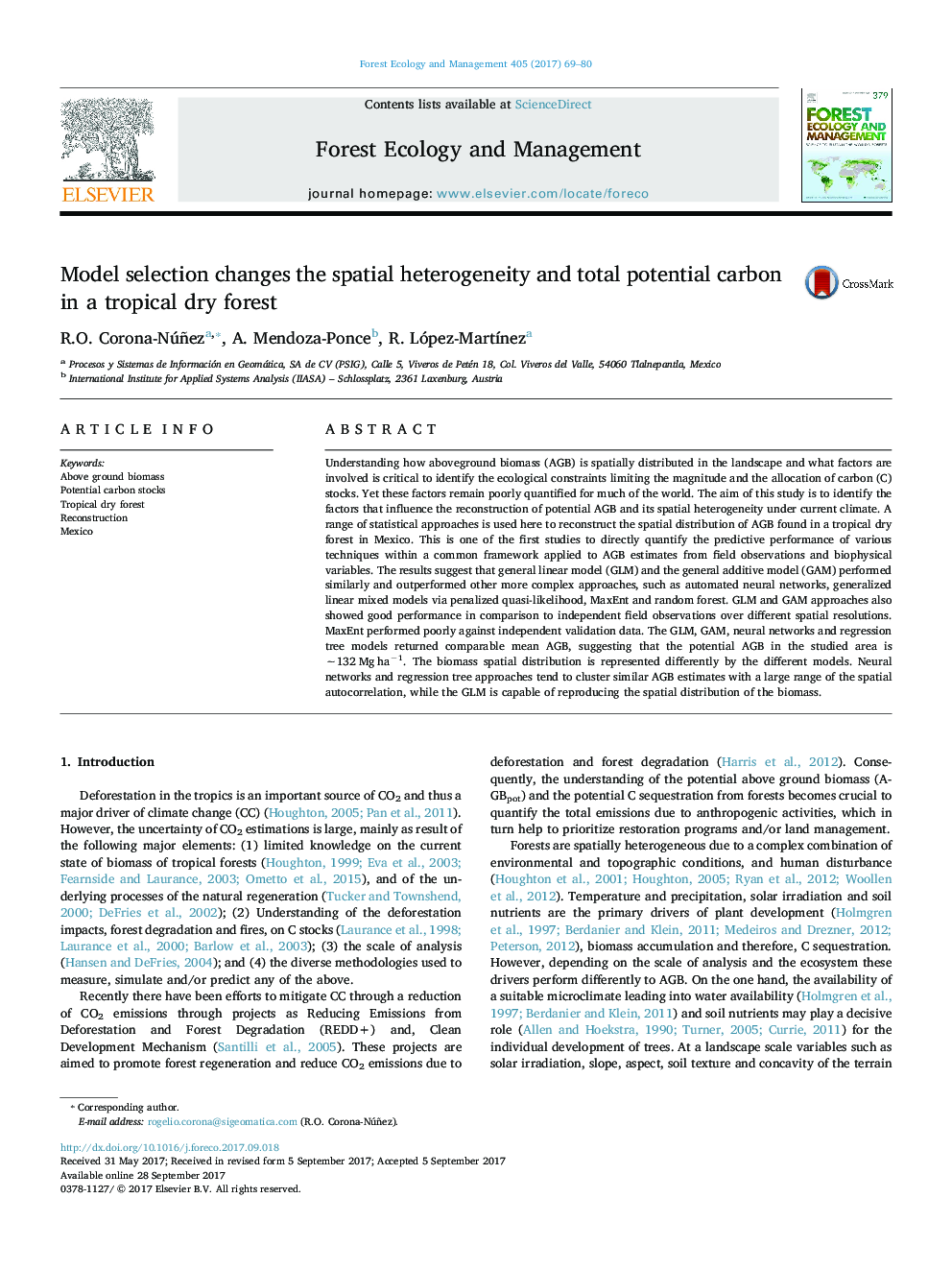| کد مقاله | کد نشریه | سال انتشار | مقاله انگلیسی | نسخه تمام متن |
|---|---|---|---|---|
| 6459051 | 1421353 | 2017 | 12 صفحه PDF | دانلود رایگان |
- Model selection can produce the highest uncertainty to understand the AGB distribution.
- Most of the models reproduce the mean AGB at landscape scales.
- GLM and GAM models reproduced the spatial distribution of AGB over different spatial scales.
Understanding how aboveground biomass (AGB) is spatially distributed in the landscape and what factors are involved is critical to identify the ecological constraints limiting the magnitude and the allocation of carbon (C) stocks. Yet these factors remain poorly quantified for much of the world. The aim of this study is to identify the factors that influence the reconstruction of potential AGB and its spatial heterogeneity under current climate. A range of statistical approaches is used here to reconstruct the spatial distribution of AGB found in a tropical dry forest in Mexico. This is one of the first studies to directly quantify the predictive performance of various techniques within a common framework applied to AGB estimates from field observations and biophysical variables. The results suggest that general linear model (GLM) and the general additive model (GAM) performed similarly and outperformed other more complex approaches, such as automated neural networks, generalized linear mixed models via penalized quasi-likelihood, MaxEnt and random forest. GLM and GAM approaches also showed good performance in comparison to independent field observations over different spatial resolutions. MaxEnt performed poorly against independent validation data. The GLM, GAM, neural networks and regression tree models returned comparable mean AGB, suggesting that the potential AGB in the studied area is â¼132 Mg haâ1. The biomass spatial distribution is represented differently by the different models. Neural networks and regression tree approaches tend to cluster similar AGB estimates with a large range of the spatial autocorrelation, while the GLM is capable of reproducing the spatial distribution of the biomass.
Journal: Forest Ecology and Management - Volume 405, 1 December 2017, Pages 69-80
